Meryl Streep looks like fun. Amy Adams, unfortunately, looks drippy as she does kitchen slapstick (eek! a lobster) we’ve seen a million times before:

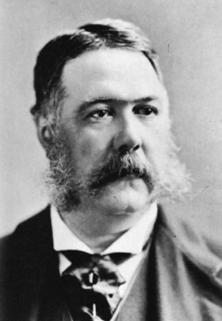
Mike Sula, boss hog on The Whole Hog Project which has also made Sky Full of Bacon a Beard co-nominee or whatever (soon to become inevitable co-loser to Ruth Reichl; it’s like being up against Daniel Day-Lewis for Best Actor) at the James Beard awards, which I believe I may have mentioned here once or twice, is interviewed by Menu Pages about all that and scatters lies, utter damnable lies about Sky Full of Bacon. (He knows the actual percentage is 37.5%, not a third.)
Thanks also to Monica Eng, who gave SFOB a shoutout in her and Phil Vettel’s interview piece the other day.
The first in a new series of posts devoted to returning to places I haven’t been to in a long time.
So I went out to a western suburb to interview a chef, only he was in the midst of buying a house and when his inspection got scheduled for the same time as our shoot, he forgot about it. He was abjectly apologetic when I reached him by phone, but really, I said, don’t worry, I’ll come back in two hours. I’ll happily take any excuse to toodle around some section of Chicago I haven’t been to in a while, and see what I find. It was a gift, even if it would have been hard to explain why in a way that wouldn’t have sounded cracked to a normal person (which is why I’m telling you).
Well, there’s not all that much around the Hinsdale area, really, but I did remember one thing. At a holiday party for my wife’s previous job, years ago, someone brought a pie from a bakery in Hinsdale, called Toni Marie’s. Here’s what I wrote about it at Chowhound, note that the hyperbole is a little tongue in cheek, imitating the way RST, the Shaolin Master of Chowhounds back then (sadly MIA as we really changed the nature of food coverage in Chicago), would rhapsodize about every new find as the best imaginable of its kind:
The greatest pie of my life: Toni Marie’s (plus gen’l bakery thoughts)
Perhaps I exaggerate. But can you afford to take that chance and go on believing that transcendence eludes the pie category when I, yes I, say I have tasted it this very night?
Let me back up. There are some foods that seem to offer limitless opportunity for subtle gradations of goodness and greatness— and some that don’t. I always find it hard to answer “where is the best breakfast”— how much better can one set of scrambled eggs or pancakes get than another? It’s more like, ask me for the name of a reliably competent breakfast place near you, and the ones you absolutely should stay away from.
That’s basically how I think of pie. There’s generic pie, like you’d buy at Jewel. It’s fine. There’s a class of pie above that, like the Achatz ones you find at Whole Foods. You know you’re eating real crust and not a styrofoam-based crust substitute, as may be the case with Jewel’s pie. But I did not believe in transcendent pie experiences… until tonight, when I had a sliver of apple-raspberry pie from a place called Toni Marie’s in Hinsdale.
I know nothing about this place or what else they make or what they’re most famous for; it was simply a pie that someone brought to a Christmas party (in Hinsdale). Not until I did about five Google searches did I find the correct spelling (see below). But the sliver, the thin dietarily correct holiday season sliver I had, was magical. The combination of apple and raspberry– brassy, immature raspberry mellowed out by the relaxed, grownup bass of baked apple– was inspired; but there was more, a concentration of flavors, subtle spices existing just beyond my tongue’s ability to identify them, that moved it into the realm of the sublime. All of that between the covers of an honest, styrofoam free, flaky crust.
(I have to admit something now. I have held my tongue when people like RST have talked about the lack of support for the surviving Viennese model bakeries and whatnot. But the fact is, I’ve tried a lot of these old places and never been that thrilled. I get my kids’ birthday cakes exclusively at Dinkel’s out of neighborhood loyalty, and they’re very good, as are their chocolate bismarcks. I hit Swedish Bakery this time every year for cookies and weird peppery coffeecakes to take home for Christmas. I buy a six-pack of Ann Sather cinnamon rolls on occasion. But I have to admit, I am rarely delighted with the results when I pick up the usual coffee cake or danish or a loaf of storemade bread in a randomly selected old school bakery. The newer ones, the yuppie ones you might say like Red Hen, beat them hands down for imagination, flavor, texture, everything. Maybe there are ones that are truly transcendent, or at least as intermittently excellent as Dinkel’s is— Reuter’s? Roeser’s? I don’t know. If you do, tell me. In the meantime, check out the pie at Toni Marie’s.)
Toni Marie’s
51 S Washington St
Hinsdale IL 60521
(630)789-2020
Many things have happened since that post in 2002— I’ve become a serious and fairly accomplished pie baker (I even judged a pie contest once). And of course, Chicago now has its own range of artisan pie bakers (Hoosier Mama, Bleeding Heart, etc.) we didn’t have back then. (I don’t only buy my birthday cakes at Dinkel’s any more, either.) So if Toni Marie’s was still open, and if I could find it, would it measure up to my hype of 6-1/2 years ago?
I actually didn’t even remember the name offhand, but Hinsdale’s commercial district is small and within a minute of driving around I’d spotted it. I went inside and at first I couldn’t spot pie— the place was filled with the muffins and cookies that are, I expect, its bread and butter in a burb with lots of non-working housewives gathering over coffee. But a small metal rack held two apple-blackberry pies, so I bought one, a not-cheap $18.95.
Since I make crusts with leaf lard and a bit of whole wheat, sometimes I find the sturdily fluffy all-butter crusts too thick and, well, structural, next to the meltingly tender butter-leaf lard combo. There was a little too much crust rolled up at the end, but it was well made of its type. What really stands out about Toni Marie’s is that they have the same philosophy I have about pie filling— as little sugar as you need to make it sweet, as little corn starch as it needs to not be runny, let the flavor of good fruit shine through. The combination of apples and blackberries and just the slightest hint of apple-pie-seasonings was dead on, tart and homey. It’s really good pie. Greatest in the universe, that may have always been in jest, but very good indeed. If fate ever deals you a chance to wander the Hinsdale area looking for something, anything to do, don’t miss it.
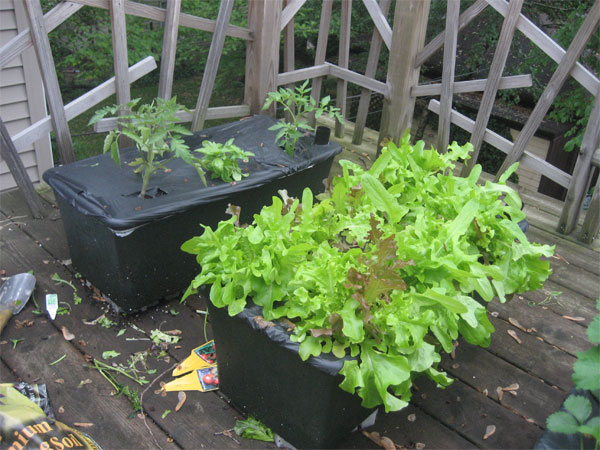
Last year I bought three Earthboxes* for my otherwise largely unused deck. The result was a wonderful bounty of lettuce and arugula (as shown above), a smattering of tomatoes, a few herbs and a little disappointment with strawberries and peas. You can read more about it all here.
This year, I bought three varieties of greens, some French breakfast radishes which apparently grow best mixed in with other stuff, and some beets and rainbow chard just for something different, what the heck. I dug out last year’s fertilizer, topped off the boxes with some new potting mix and fertilizer, and just managed (with the help of an eager 7-year-old) to plant everythng as the rain started falling, a good excuse to clean up tomorrow. Here’s what’s we planted:
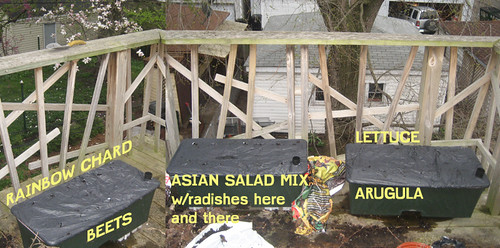
* So what’s an Earthbox? It’s a container that’s extremely efficient about using water, having a reservoir underneath and a cover on top. So it basically makes for excellent, idiot-proof container gardening with a very high yield for the space. My first Sky Full of Bacon features Bruce F., who has over 30 do-it-yourself Earthbox-like containers on his roof in Wicker Park. If you haven’t seen it, check it out:
Sky Full of Bacon 01: How Local Can You Go? from Michael Gebert on Vimeo.
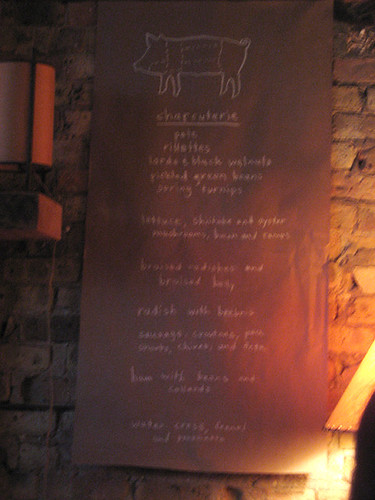
Here’s one way of describing the “pre-industrial pig” dinner held in Humboldt Park Saturday night— a secret underground dinner, limited to foodies in the know, in celebration of the pre-industrial pig, showcasing the meat of heritage red wattle pigs raised by farmer Henry Morren, including two-year-cured prosciutto and other meats.
Here’s another way to describe it: some caterers from Wisconsin held a dinner in some guy’s apartment for $65 a head.
The whole secret restaurant, underground supper club movement was irresistible for a moment among foodies (especially on the coasts) for whom restaurants couldn’t open fast enough to satisfy their urge for the next new thing, for knowing about something before anyone else did. The Wall Street Journal declared them dead over two years ago, but they keep chugging along, and as Mike Sula in the Reader (who was the main publicist of this one) noted, the proprietors of the one I attended, Madison’s Underground Food Collective, “have continued staging these events in their hometown and beyond, such as a recent set of sold-out pig dinners that rendered the NYC food media gobsmacked.”
The idea of a secret restaurant operating outside the law, appearing and vanishing in a single night, has obvious cachet for a certain sort of foodie. But the reality is, every event like this that I’ve heard of in Chicago has been by licensed caterers; they may be skirting an occasional law (eg., if someone were to serve homebrew along with their food, I doubt that would be legal) but basically, it’s no closer to being a food-speakeasy than your cousin Berniece’s wedding at the Elks Club.
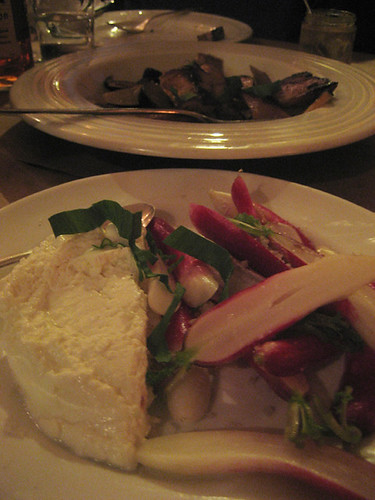
More importantly, if a meal like this really struck New Yorkers with the force of the new, then New York must be well behind Chicago in its appreciation for heritage breeds, local produce and the like. It’s certainly nice to attend a meal where the farmer is one of your servers and happy to talk about what he does as you eat the food he raised, but it’s not radically different in that sense from two recent events I’ve been to at Mado, or the mulefoot dinner at Blackbird last November. Many chefs in Chicago work intimately with farmers, base their menus on what’s new and good at the farmer’s market, and so on. Many of them dabble in charcuterie, homebrewing, or similar artisanal techniques. It’s great that these guys do all that, but it’s not redefining the whole dining experience in some way that only an underground restaurant would dare. The underground dining experience turns out to be not terribly different from the above-ground one.
Which brings us, finally, to the food. And, well, I’d say on the whole it came out like food from really high quality and thoughtful caterers, but a bit shy of the precision displayed by top-flight restaurant owners who have the discipline born of knocking it out, six nights a week 52 weeks a year. The food was intelligently thought through, some dishes were very good, but there were also executional errors here and there (chewy white beans, overcooked sausage, a too-liquid pate which, it was reported, had to be rescued at the last minute when it fell apart) that you wouldn’t expect to see in a restaurant. In many ways it was more like attending a dinner party by a highly skilled home cook (like me!) than it was like the utterly proficient family dinner I attended a week ago at Mado.
In particular, although the red wattle pig meat was of nice quality and generally prepared fairly well, I never quite felt that any one dish took it to an exceptional height, as two or three of the half dozen dishes at the mulefoot dinner did. Closest perhaps was a very simple lardo (only salt-cured) served with black walnuts, an excellent combination. The pate and rillettes were quite good, but both masking the flavor of the meat with a bit too much eager-to-please sweetness. Pork belly with black radishes worked much better together, thanks to the strikingly bitter radishes, than the rather plain pork belly did by itself; same for the ham. There was an odd thing about some bacon (served in a salad) being cured for 18 months, which seems 17 too many by any standard to me, and certainly didn’t manifest itself in a particularly prosciutto-like flavor or any other sign that the extra time had produced extraordinary results beyond very good bacon. And a two-year-old prosciutto was served in such tiny dice in a salad that it was impossible to come to a judgement about how it compared to the La Quercia I’ve recently gorged myself on for an upcoming podcast.
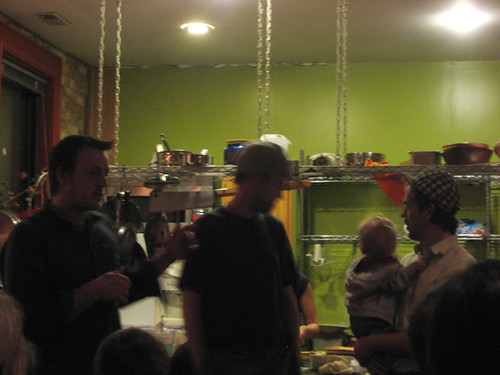
In the end, I had a nice meal with some old friends, enjoyed the atmosphere somewhere between dinner party and dining out, and had several things that I thought were quite good. But the outsider mythology that underground dinners evoke— that outlaw chefs might offer experiences beyond what workaday chefs would dare— proves to be a bit of oversell. At least in Chicago, where the good things Underground Food Collective stands for are shared by a goodly number of restaurants serving nightly.
Since I’m going to an underground dinner tomorrow night, I had better finish up my own recent feast, previously chronicled (the country ham part) in this post.
I think I’m fascinated by Southern food because it’s the food heritage I never had. Southern food was on the periphery of midwestern eating when I grew up— Kansas may be more like Minnesota or Wyoming in many ways, but Oklahoma and Missouri are both strongly Southern-tinged, and so Southern influences often leaked over into Kansas diner food. It reminds me of childhood eating in little ways while having a rich and baroque folklore, exotic ingredients (crabs, cooters, okra, grits), colorful names and all the other things that desperately plain midwestern food lacked. When even something as common as biscuits and gravy seemed to summon up a whole Steinbeckian world of working-class joes and janes beyond my middle class growing-up, just imagine what the thought of crab shacks or hoe cakes portended.
There’s certainly loads of color to be had in a book like Charleston Receipts, the 1950 compilation of Charleston-area recipes which is said to be the oldest Junior League cookbook still in print. For starters, each chapter begins with a healthy dose of Negro dialect, and the recipes effortlessly cover the gamut from society balls and cotillions to downhome cooking of your catch in a cast-iron pot over a fire. There’s almost novelistic flavor even in things like the names of the contributors— one recipe is attributed to “Mrs. Serge Poutiatine,” a Charleston belle (nee Shirley Manning) who landed a Romanov prince. The recipes often show their origin in the era of canned vegetables, but it’s not hard to adapt them to their pre-Del Monte form.
So I took about half the recipes from Charleston Receipts, while most of the rest came from Edna Lewis’ and Scott Peacock’s The Gift of Southern Cooking, a more modern but generally authentic book not unlike the one I used at my earlier Southern party, James Villas’ The Glory of Southern Cooking. Here’s what we had, starting with appetizers:
• Punch. Green tea seemed to be the base for many punches in Charleston, and it was an interesting thing to try, the earthy flavor of tea standing out in what was otherwise a sweet and fruity punch.
• Cheese straws. Little twisted cookie or biscuit-like things with lots of cheddar in them, reputed to be inevitable at Southern functions (don’t have a funeral without them!) They taste exactly like Cheez-Its.
• Continuing that theme, one guest made pimiento cheese spread sandwiches:
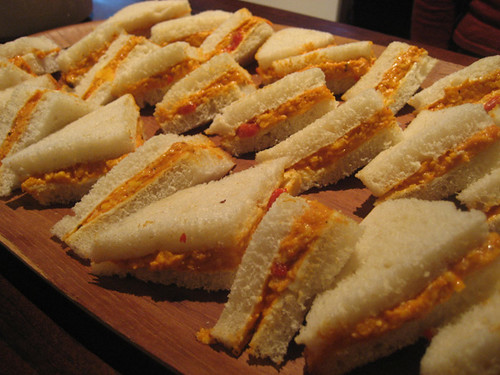
• Spiced pickled shrimp. This was really tasty, you just basically make a mustard vinaigrette and pour it over some boiled shrimp the day before. I will make these again, and once we had them, I no longer regretted (as I had been doing) that I hadn’t done something with some more exotic sea creature.
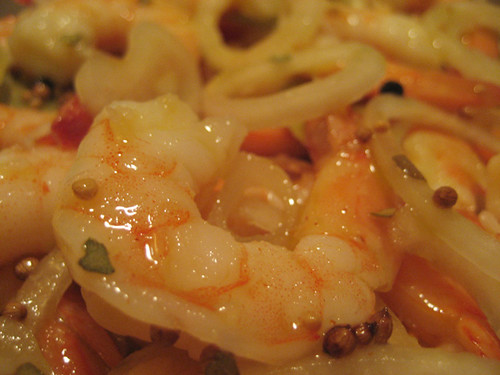
• Another guest brought egg balls— I thought these needed an extra kick, dry mustard or something in the breading:
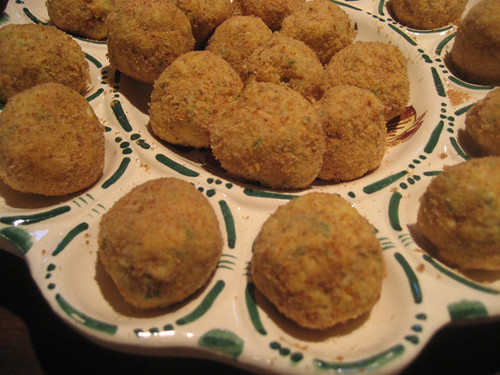
• Fried pickles made a return appearance:
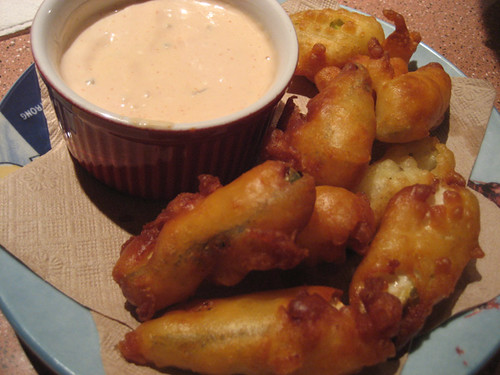
There were other things, some smoked duck breast from a well-known supplier which another food writer brought by, a shrimp dip, some baked cornmeal mush things that Cathy Lambrecht had found in some book (they needed to be a vehicle for something else) and so on.
Following the appetizer, we had she-crab soup— actually we didn’t inquire into gender, just used the can straight from Costco— a simple soup (butter, sherry, butter and butter) that got raves even though I thought, so simple and basic, what’s there to rave about? Then, of course, the ham, previously discussed, served with turnip greens in a pot likker made from Paulina smoked butt and ham hocks.
I believe, firmly, in many desserts and so we started with a Jell-O dessert called (wonderfully) a rum bumble, rum and a little rye mixed with cream and Jell-O. I actually made one batch of this and scrapped it, getting help from Cathy, fan of 50s cooking, as to how to mix Jell-O with cold things like cream without it turning grainy as the Jell-O hits the cold cream and instantly sets. Second batch (seen served here in Crate and Barrel tea lights) turned out perfectly.

Art and Chel Jackson (of podcast #7) brought molasses ice cream with a bacon cookie:

Finally, I was enticed by a recipe in the Lewis-Peacock book for what Miss Lewis regretfully acknowledged was known as Jefferson Davis custard. Two things set it apart: one was whipping egg whites separately from the yolks before baking it all as a custard, which made for a wonderfully light custard. The other was the fruit— can you name it?
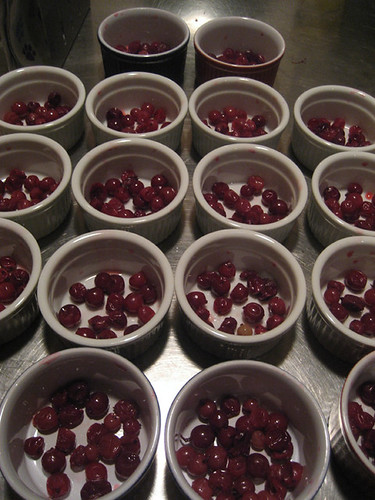


The answer is: gooseberries. I’d bought them a year ago and frozen them, this was the perfect occasion to get them out and spend hours laboriously snipping off their hairy ends. The tart, tortillaesque gooseberries (no really; they have a discernable and often commented-upon tortilla-like note) and the sweet, delicate custard really went together beautifully.
The ham continues to give— I just made Navy bean soup with it— and the satisfaction of all these dishes as a collective journey deeper into Southern cooking was deep. If I start underground Southern dinners*, I’ll let you know.
* In a pig’s eye I’ll ever do that.
So Kevin Pang emailed me to say that I had it all wrong about suspecting bureaucratic sloth in The Cheeseburger Show’s long gestation.
The real reason, he says, is that he was so coked up he didn’t even realize he had a TV show until he read it at Menu Pages.
No, wait, that was why there wasn’t a new Guns N Roses album for 17 years. The real reason, Kevin (who only gets high on well-seared ground beef) says, is simply that they’ve been working on it all along like they should be, getting a sponsor, getting a promotional push together, getting feedback from local food media savants (which confirms that we are, as long suspected, chopped liver) and that just because the first iteration went up on Vimeo in January, doesn’t mean it wasn’t tweaked and refined and made into the fabulous thing it is today while Vimeo continued to show the original upload date of that first crude version, edited with flint spears and bison fat.
Oh, and the site, allowing comments, will be up shortly, he swears.
We’re still all for the internet virtues of doing stuff fast and failing in public (“That’s obvious,” a voice shouts from the back row), but the process Kevin describes does not meet our previous definition of corporate sloth in the face of internet-based innovation, which believe us, we acquired through actual experience in certain large advertising agencies we prefer to forget the names of.
Here, once again, is episode 2:
The Cheeseburger Show, Ep. 2 from The Cheeseburger Show on Vimeo.
And remember, I’m interested in linking to, embedding, and making unsourced speculation about any food video being done in the Chicago area, so if you make some, let me know! (A certain magazine recently sent me three copies of their magazine to tell me about some awards they gave out, but never once mentioned the video that’s all over their site. That’s what I’d be linking to and talking about, if you told me about it!)

Michael and Jill Morowitz, of Local Beet fame, sent me so many things that they might as well be the guest ghost-hosts of this 7 Links of Terror, the first three are theirs:
1. An NPR piece on The Settlement Cook Book, “The Matzo Ball Matriarch of American Jewish Food.”
2. A whole series of short documentaries about a Berkeley woman who has a shop devoted to pickling just about anything. It will inspire you… to pickle!
3. Two posts from a blog about weird old books and magazines: a wartime ad headlined The New Pioneer Woman in Meat and Art Made of Fat, a really strange and fascinating post about a guidebook for butcher shops making window displays out of fat scraps. Yesterday’s sales display becomes today’s serial killer obsession….
4. Another excellent edition of the Santa Monica public radio show Good Food; be sure to listen to the segment on the plummeting fish population (around 9 minutes in), and the one with a woman who makes a straightfaced case for a diet high in animal fats (about 31 minutes in), though there’s plenty good (including Michael Ruhlman) in it so you might as well listen to the whole thing:
5. Have you gotten emails about that bill that’s going to outlaw organic farming, even home vegetable plots? There’s a lot of talk about that, and a lot of people have hastened to say the concerns are overblown. Reason magazine looks at it and is not entirely reassured.
6. Newly laid off Tribune folks should make haste to ex-colleague Emily Nunn’s blog Cook the Wolf, as it’s full of saving-money-by-cooking-interestingly posts. Start with this slightly barbed childhood remembrance about eating cabbage. You might also notice, instructively, that Emily without editors is more interesting to read….
7. Finally, you read my review of the new book about North Carolina barbecue, Holy Smoke, right? Well, here’s a post by LTHForum poster and regional food obsessive Pigmon, with reports on many of those places and, better yet, mouthwatering photos of many of those places.

First off: I promise this is not merely going to be an Andy Rooneyish crotchety rant against Facebook and Twitter, though that is territory we will pass through before we arrive at our real destination.
So, vaguely sensing that there might be some advantage to them for making Sky Full of Bacon better known and thus more viewed (which is its point, after all), I joined both Facebook and Twitter. So now I have my Facebook page, Sky Full of Bacon’s Facebook page, and a Twitter feed (I guess you don’t have a Twitter page, you have a feed).
Now all I lack is a reason why I want any of these things. I have posted a few things on Facebook, but only with an enormous amount of self-consciousness which has inhibited me from posting other, more trivial or cryptic things. You know, I can imagine that there are three or four people out there who might read my comments on a restaurant, but I really do not believe that there is, or even should be, an audience for the non-restaurant minutiae of my life (“Walked the dog over the same path we’ve already walked a thousand times. He will probably live to walk it 15,000 more times”), or who needs me to direct them to that British Idol video with the middle-aged woman who sings her heart out (apparently; I haven’t watched it, I’ve just seen 12,000 Facebook links to it), or who will take interest if I post something truly cryptic, as others seem to:
Michael Gebert is wondering why we don’t have utensils for our feet.
I guess I can see the appeal of Facebook, on a chitchat with friends level, even if it’s mostly not for me. Twitter I found even more mysterious at first, its 140 character limit, lack of graphical interest and general tendency toward borderline incomprehensibility bothering the writer in me:
@funguy Plz check out singer wow i couldn believe www.tinnyurl.com/3dkjf387r4
Until I finally realized, that’s not a bug, that’s a killer app. It’s the very fact that you can’t craft well-written prose in Twitter, that all you can do is take your latest brain fart and dispatch it to the world in telegraphese, that makes it appealing. (Okay, we’re getting really close to Andy Rooney here, I know. Hold on.) It’s the great leveller, the fact that Thomas Pynchon and your Aunt Marge both have to write in the same dash-it-off style, that makes Twitter appealing as a way to get the pleasure of blogging your minutiae to the world— without needing the skills to write interestingly, even by the greatly diminished standards of blogdom. It’s a shortcut to an audience— which is what makes that British Idol woman, who went from utter obscurity to world fame without ever having tried to be merely a professional, the perfect Twitter subject. (So what would be the Great American Tweet? @Gatsby money’s great but lost love hauntz— drive safe)
I still have some reservations about this— in many ways I think Facebook gets the virtues of communities like LTHForum exactly backwards. There, I didn’t care about your banal political or TV-viewing or whatever views, and you didn’t care about mine; we met on neutral ground where we had something to contribute, and people who were strangers in every other way could find each other and at least talk food. Now I have to take the people I met somewhere else, and find out how banal each others’ views on everything but food are. Clearly some know how to grow their base of friends via Facebook, but it seems likely to shrink mine.
But beyond that, there’s something really weird about all this that has only slowly dawned on me. Which is, by becoming a publisher to the world, by becoming a one-person media source, as internet technology has allowed me to do, I also take on the curse of all mass media, which is, the curse of having to chase an audience and maintain one’s popularity. In short, of living or dying by the numbers.
This is a problem that ordinary people didn’t have before— that of being able to know exactly how well one’s latest missives are being read or not read, of being able to track one’s popularity in minute ways. Every new form of media comes with some form of feedback. Sometimes it’s quite precise (or at least gives the illusion of such)— I can see exactly how many people watched my podcasts on Vimeo each day, and chart their ebb and flow daily, if I wish. Sometimes it’s a little more secondhand— if no one responds to what I put on Facebook, is it because they rolled their eyes and ignored it, or because I said it so succinctly and perfectly that further comment is superfluous?
One can follow this to quite a neurotic degree if one wishes, self-esteem rising or falling with the numbers, but beyond its crazymaking potential, it also subjects ordinary people to the same pressures that studio execs and TV producers and so on have so often given in to, disastrously for their work— that of tinkering to make this or that a little more appealing to the audience, in hopes of grabbing an extra point or two of audience share or a slightly bigger opening weekend. For someone like me, whose professional life in advertising has often involved being a bit of a stylistic chameleon depending on what product I was writing for, it’s all too easy to imagine creating an ever-more false persona who gives the audience what they want, rather than blogging for one’s self and a certain truthfulness about what you’re doing.
So this is the weird we live now, in which each of us seems to be connected to a Nielsen home (or, as Herman Mankiewicz said when Columbia chief Harry Cohn explained that a picture was good if he didn’t wriggle in his seat, “Imagine—the whole world wired to Harry Cohn’s ass!”) For some this will be fine; blogging will be a business, and the business will involve projecting an image which is only tenuously related to any reality, and the more popular it gets, the better.
Me, I don’t want to live like that, and maybe I can say that because it’s still not a business for me, it’s a mildly lucrative hobby. I want an audience, sure, but I don’t want to do anything to get it, for the sake of my own truthfulness, my own journey (to use a cliche of the moment), I want to maintain a little of the sangfroid toward audience-pandering that T.E Lawrence had. When he first came back from Arabia, he arranged to have published, privately, his journal of his experiences (what would eventually become Revolt in the Desert). The printer asked how many copies he wanted, and so he replied that he had estimated the intelligent audience in England for an account of what was really going on in the middle east, and he had determined… nine copies.
Then, when they arrived, he decided he had been overoptimistic, and destroyed two of them.
TELawrence says U R a silly people, vain, barbarous & cruel. But desert rocks!!!
The Cheeseburger Show, Ep. 1 from The Cheeseburger Show on Vimeo.
Sure, Chicago has a sky full of bacon, but it does it have enough cheeseburgers to sustain a series of shows on that subject? I’m not sure; most of the really good cheeseburgers I know of in town are referenced in this first episode. All the same, this is a solid effort at expanding one’s personal brand onto video from a ChiTrib food writer, which strikes a nice balance between a Food TV-ish fast pace and actually having some meatiness (pun only marginally intended) in the subject matter. I’m all for it, and more, from our local print folks as their industry transitions into whatever it’s going to become.
P.S. I went to the Cheeseburger Show’s page at Vimeo and this was actually completed in January (but, presumably, kept out of view except for internal Trib purposes). So hopefully more episodes will follow fairly shortly and they’ve been busy all this time. Still, I find it a little old school (and not in a good way) that they did a pilot and then sat on it for 3 months. Get it out to the world and let people see it and comment on it! (Which you actually can’t do anywhere, since the Vimeo page only allows approved contacts to comment and the show’s own site isn’t really up either.) This is what the web is all about, something a newspaper struggling to find new ways to reach its readers ought to be taking advantage of more than anybody.* Throw it out there, fail in public, learn from the reaction to each one as you go— I certainly have. Number 2 and 3 would be better already if we’d all had the chance to comment back in January on this one. Or even to comment now….
* Yes, I know it’s mainly on CLTV. Which is only on Comcast. So for lots of us, it’s only on the web. And that’s how they should be thinking, anyway.
UPDATE: Episode 2 is here, it says it went up 16 days ago. So it sounds like having shot their 10-minute video for fun in January, it then spent three months being carefully deliberated within the Tribune company before they were given a green light for #2. As stories of corporate mucketies not getting it goes, maybe not up there with this truly classic one, but still, that’s some pre-Internet lack of speed happening at the Trib tower at a time when they need to be trying lots of things and getting them out as fast as they can. C’mon, well-bonused execs, he’s trying to save your company, cut Kevin and a zillion like him loose.

 Posted in
Posted in 




